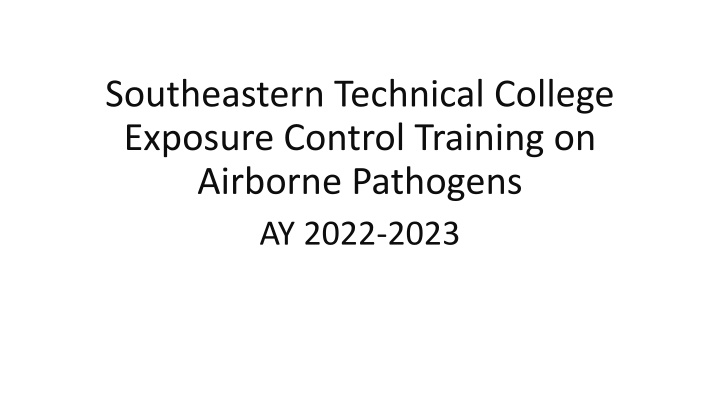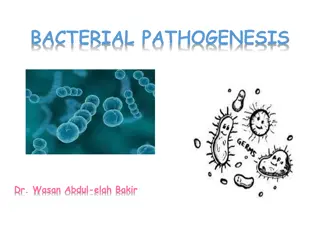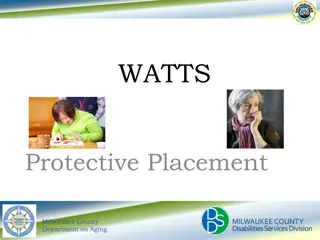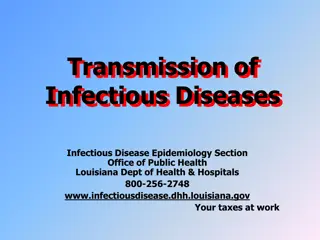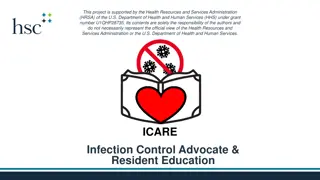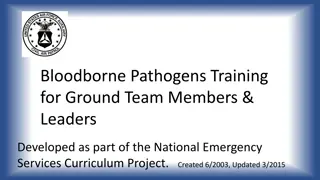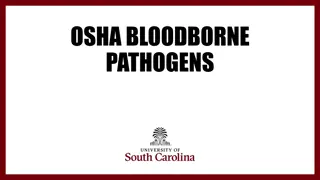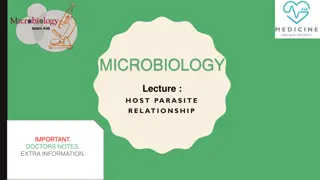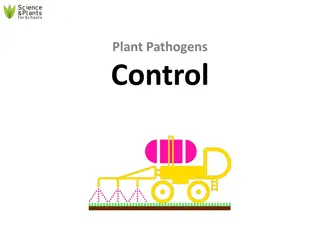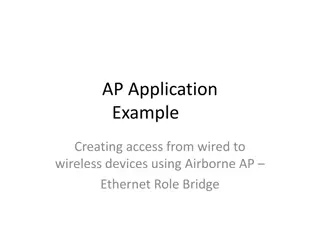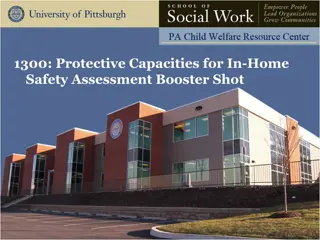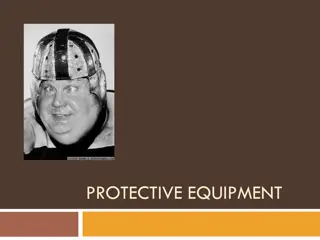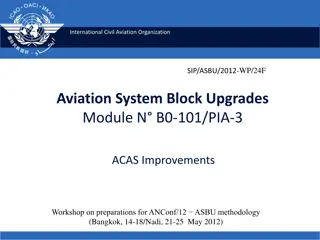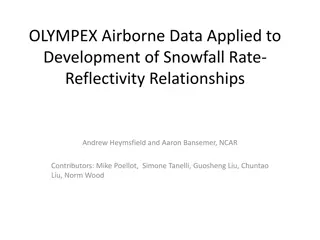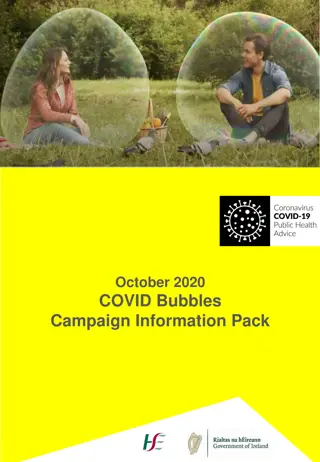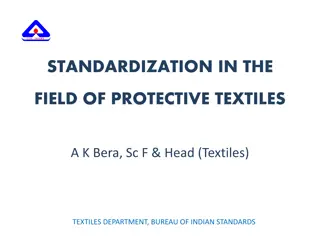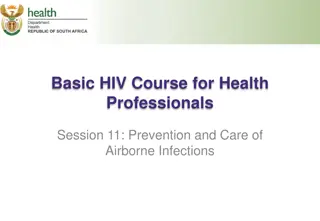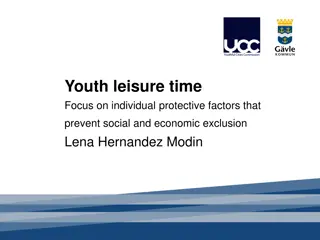Airborne Pathogens and Protective Measures
Airborne pathogens pose a threat by being transmitted through respiratory droplets. Learn how to protect yourself and others from diseases like COVID-19 using masks and other preventive strategies.
Download Presentation

Please find below an Image/Link to download the presentation.
The content on the website is provided AS IS for your information and personal use only. It may not be sold, licensed, or shared on other websites without obtaining consent from the author.If you encounter any issues during the download, it is possible that the publisher has removed the file from their server.
You are allowed to download the files provided on this website for personal or commercial use, subject to the condition that they are used lawfully. All files are the property of their respective owners.
The content on the website is provided AS IS for your information and personal use only. It may not be sold, licensed, or shared on other websites without obtaining consent from the author.
E N D
Presentation Transcript
Southeastern Technical College Exposure Control Training on Airborne Pathogens AY 2022-2023
Purpose Statement Due to recent pandemic events due to the 2019 novel coronavirus, 2019-nCoV, officially named severe acute respiratory syndrome coronavirus 2, SARS-CoV-2, Southeastern Technical College recognizes the necessity of being prepared for other potential pandemics driven by airborne pathogens. Even though this training focuses primarily on COVID-19, other types of pathogens may be the cause a pandemic outbreak. This training is designed to help people think about measures that could potentially be taken should the situation arise.
Airborne Pathogens what they are and how they are transmitted A pathogen is a bacterium, virus, or other microorganism that can cause disease. Airborne diseases are caused by pathogens small enough to be discharged from an infected person via coughing, sneezing, laughing and/or close personal contact. The discharged pathogens remain suspended in the air on dust particles, respiratory and water droplets. It is possible for people to be infected through contact with contaminated surfaces or objects if a person touches his nose, mouth or eyes, but the risk is generally considered to be low. Chickenpox, the common cold, meningitis, influenza (flu), tuberculosis (TB), measles and COVID-19 are some examples of pathogens transmitted in this way.
Why do we protect ourselves from airborne pathogens? A person may have a strong immune system and may not have much of a reaction or symptoms to a pathogen. However, even people who show no signs or symptoms may have enough of a pathogen in their system to spread that pathogen to others. By protecting ourselves, we help slow the spread helping to protect others.
How do we protect ourselves from airborne pathogens? The Centers for Disease Control and Prevention (CDC) is the organization that is usually responsible for determining protective measures that will be most effective in slowing the spread of an airborne pathogen depending on the nature and type of pathogen involved. The following slides demonstrate ways people can potentially protect themselves from COVID-19 and its variants.
Protective Wearables Types of Masks and Respirators Masks are made to contain droplets and particles you breathe, cough, or sneeze out. If they fit closely to the face, they can also provide you some protection from particles spread by others, including the virus that causes COVID-19. Respirators are made to protect you by filtering the air and fitting closely on the face to filter out particles, including the virus that causes COVID-19. They can also contain droplets and particles you breathe, cough, or sneeze out so you do not spread them to others. Wear a mask indoors when transmission levels are high in your area. Demonstration of donning and doffing masks and respirators.
Protective Measures Social Distancing Stay 6 feet away from others Inside your home: Avoid close contact with people who are sick, if possible. If possible, maintain 6 feet between the person who is sick and other household members. If you are taking care of someone who is sick, make sure you properly wear a well-fitting mask and follow other steps to protect yourself. Indoors in public: If you are not up to date (even though vaccinated people can get and spread variants) on COVID-19 vaccines, stay at least 6 feet away from other people, especially if you are at higher risk of getting very sick with COVID-19. Avoid crowds and poorly ventilated spaces.
Protective Measures - Cough and Sneeze Etiquette Cover coughs and sneezes If you are wearing a mask: You can cough or sneeze into your mask. Put on a new, clean mask as soon as possible and wash your hands. If you are not wearing a mask: Always cover your mouth and nose with a tissue when you cough or sneeze, or use the inside of your elbow and do not spit. Throw used tissues in the trash. Immediately wash your hands with soap and water for at least 20 seconds. If soap and water are not readily available, clean your hands with a hand sanitizer that contains at least 60% alcohol.
Protective Measures - Handwashing To prevent the spread of germs during the COVID-19 pandemic, you should also wash your hands with soap and water for at least 20 seconds: Before touching your eyes, nose, or mouth After touching your mask After leaving a public place After touching objects or surfaces that may be frequently touched by other people, such as door handles, tables, gas pumps, shopping carts, or electronic cashier registers/screens If soap and water are not readily available, use a hand sanitizer with at least 60% alcohol to clean your hands.
Protective Measures - Proper Handwashing Techniques Wet your hands with clean, running water (warm or cold), and apply soap. Lather your hands by rubbing them together with the soap. Lather the backs of your hands, between your fingers, and under your nails. Scrub your hands for at least 20 seconds. Need a timer? Hum the Happy Birthday song from beginning to end twice. Rinse your hands well under clean, running water. Dry your hands using a clean towel or air dry them.
Protective Measures Monitor Your Health Daily If you are sick, stay HOME, contact your supervisor, and use the Southeastern Technical College COVID Self-Reporting form, so the COVID Response Team can contact you to provide further guidance. Be alert for symptoms: Watch for fever, cough, shortness of breath, or other symptoms of COVID-19. Take your temperature if symptoms develop. Don t take your temperature within 30 minutes of exercising or after taking medications that could lower your temperature, like acetaminophen. Monitoring symptoms is especially important if you are running errands, going into the office or workplace, and in settings where it may be difficult to keep a physical distance of 6 feet.
Protective Measures - Quarantine vs. Isolation Quarantines are for individuals who are not considered to be fully vaccinated (this definition changes over time, so please use the self- reporting tool to get the best guidance) who have contact with someone who is ill or tests positive for COVID. Isolations are for those who have symptoms consistent with COVID or test positive for COVID. Again, please use the self-reporting tool for the latest guidelines, as they may change.
Protective Measures Stay Up to Date on Vaccinations/Boosters and Get Tested Check with your healthcare provider to determine if you are up to date on vaccinations/boosters. For some individuals, a fourth injection may be recommended. Home test kits are now readily available. Remember to self-report if you are experiencing symptoms or have potentially been in contact with an individual who may have COVID prior to using a home test kit. If testing is done too soon, a false negative may result.
Proper decontamination of surfaces and documentation of decontamination The primary way people are infected with COVID-19 is through exposure to respiratory droplets carrying infectious virus. Decontaminants are stronger than cleansing agents. Many decontaminating solutions also contain cleansing chemicals. In order for these chemicals to be used properly, it is important to follow the manufacturer s specific directions. Because our facilities department is trained in handling decontaminants, one should place a work order request in any area requiring decontamination. The Facilities Department of Southeastern Technical College is responsible for documenting any decontamination requests and subsequent actions to such requests.
Reporting Current or Suspected Issues Be sure to use the Southeastern Technical College COVID Self-Reporting form, so the COVID Response Team can contact you to provide further guidance. A team member will call you, so make sure to include a phone number where you can be reached. Use this form if you have contact with an individual who has symptoms consistent with COVID, if you have contact with a person who has tested + for COVID, or if you have symptoms consistent with COVID if you have tested positive for COVID. You should also use this form prior to travelling internationally.
Evaluating Circumstances of Incidents If you report or have been identified as a potential close contact of an individual who potentially has symptoms consistent with or has potentially tested positive for COVID, you will be contacted as soon as possible with the latest guidelines once a report is furnished to the college. Employees may want to consider maintaining a daily log of close contacts to assist in this process. In-person faculty should have seating charts the very first day of class and every meeting thereafter. A close contact is currently defined as a person less than six feet away from a source for fifteen minutes or more cumulatively over a 24 hour period with or without a mask.
Record Keeping The college may be required and will comply with reporting information via encrypted email as requested by the department of public health. Numerical data may also be shared upon request to the Technical College System Office.
Proper Points of Contact for Additional Questions The Exposure Control Coordinator at Southeastern Technical College is your point of contact for any matters concerning potential contact with airborne pathogens. The current Exposure Control Coordinator for Southeastern Technical College is Stephannie Waters. She can be reached by email at swaters@southesterntech.edu
